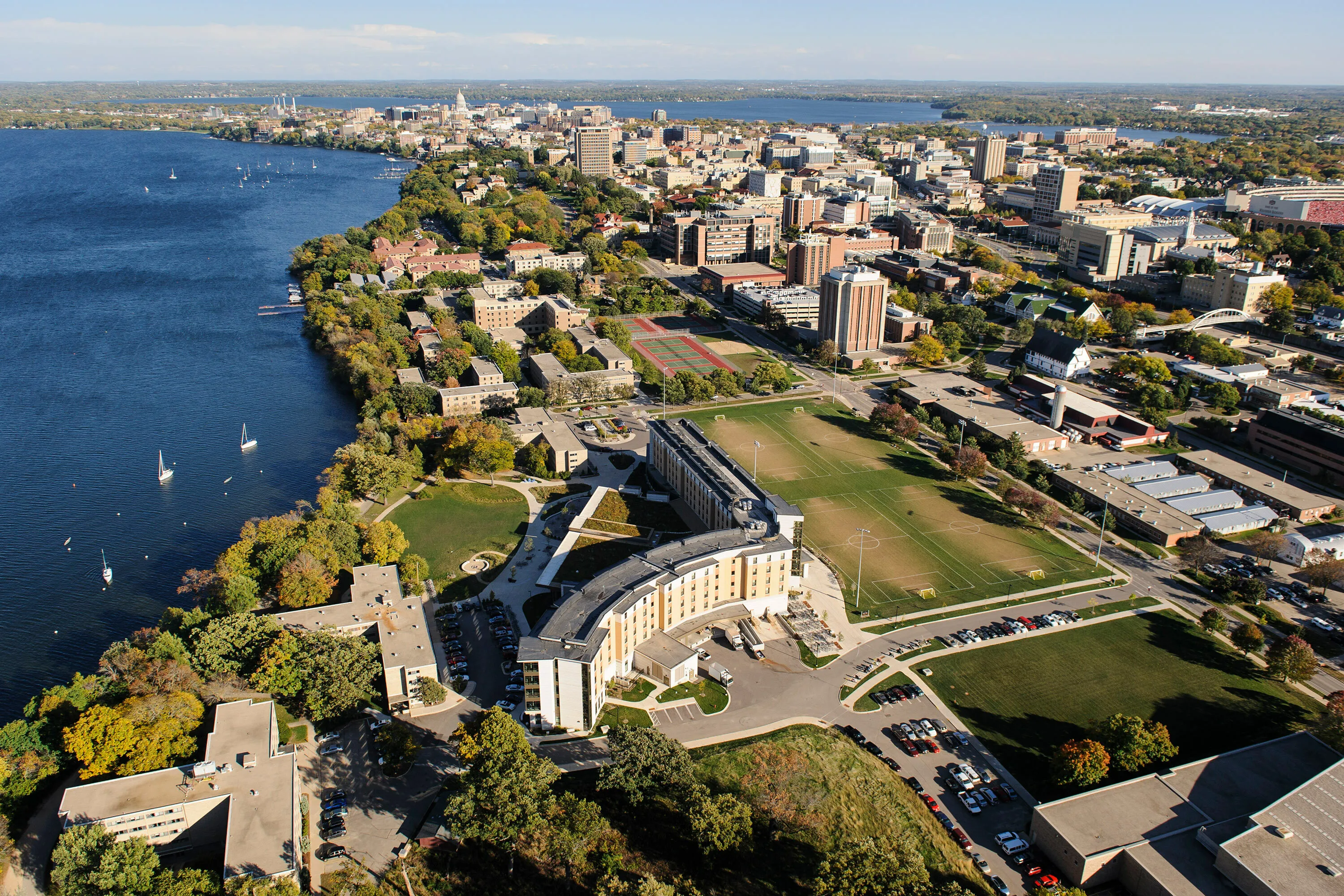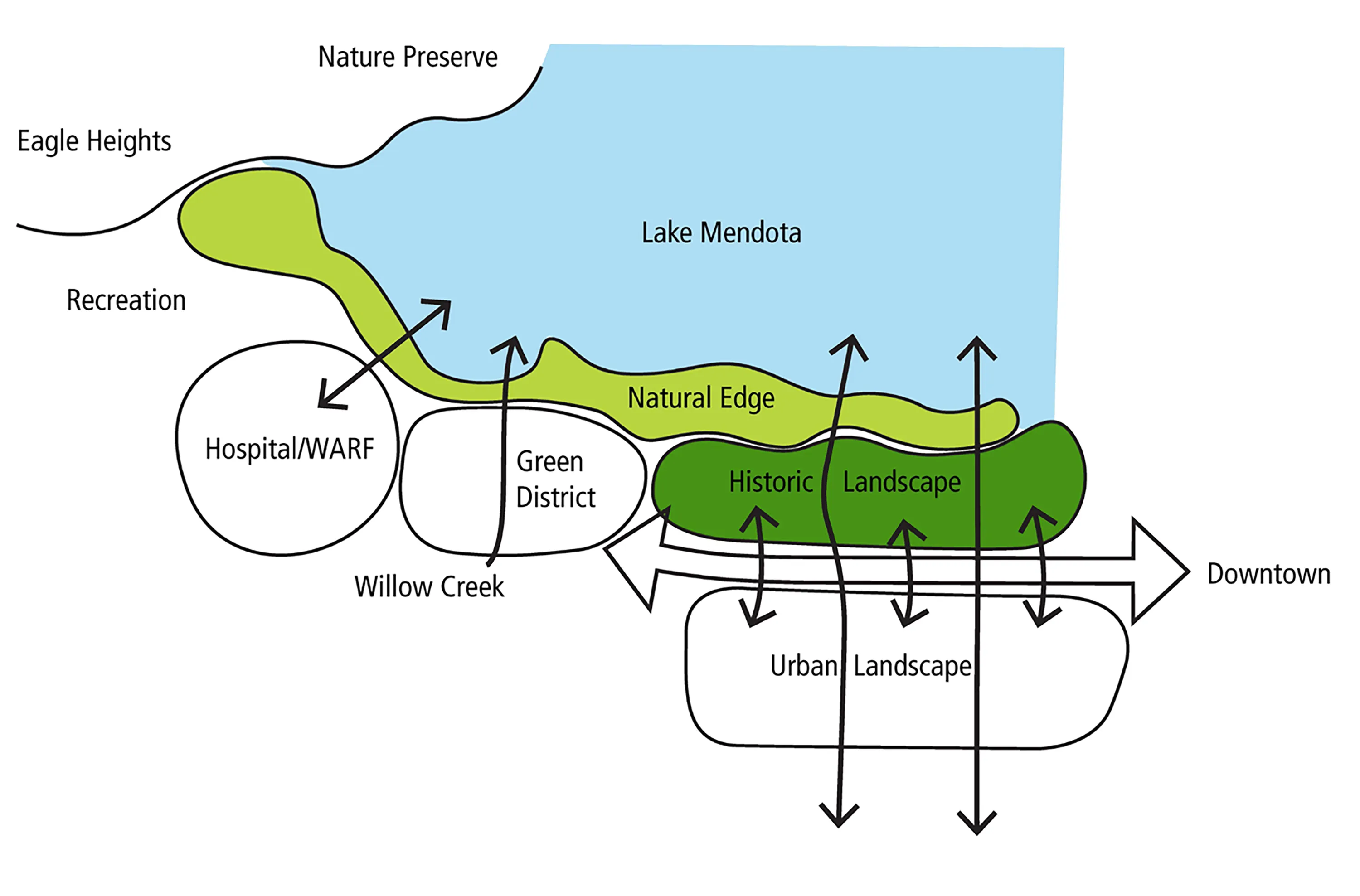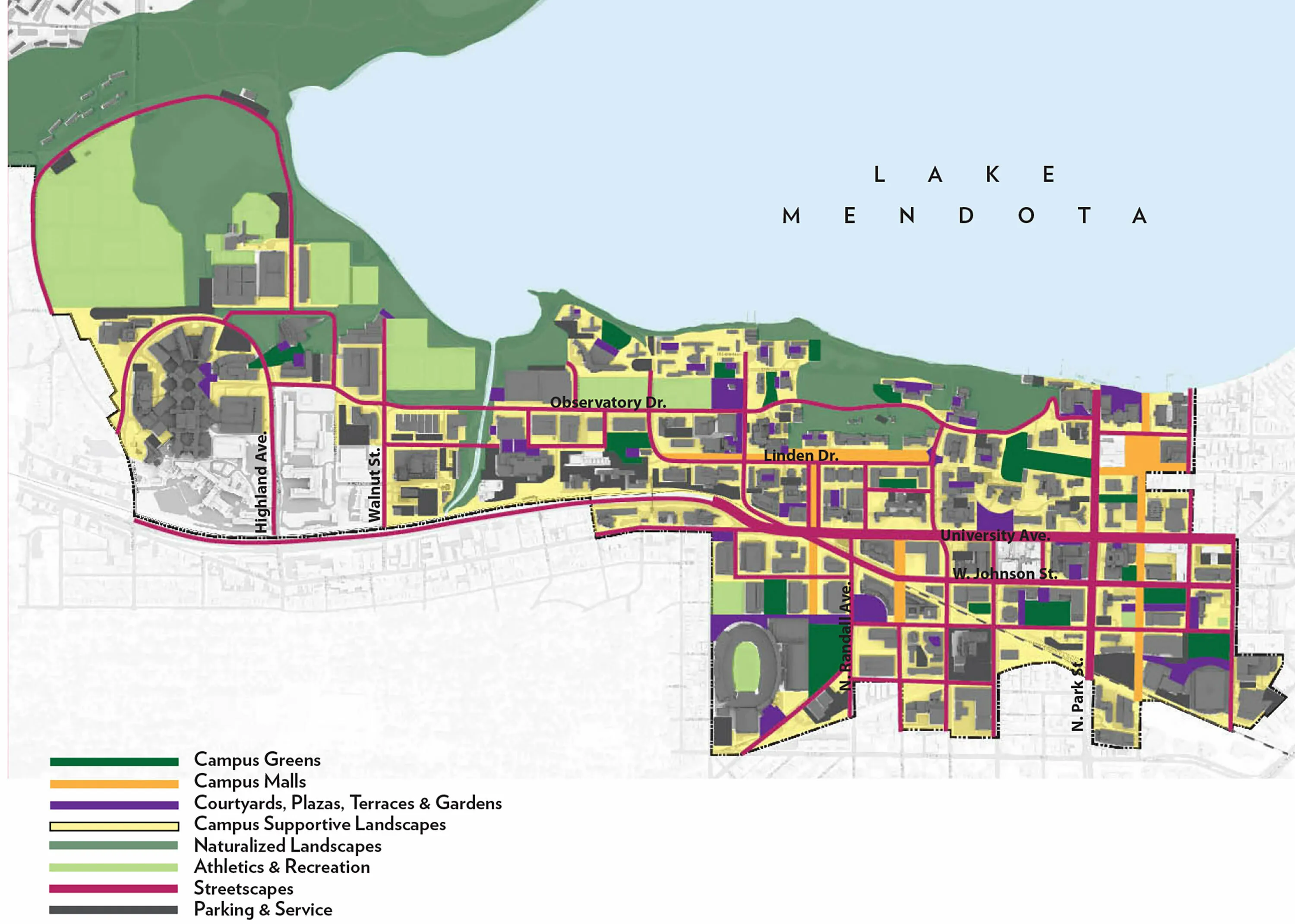The University of Wisconsin at Madison’s 936-acre campus occupies a vital intersection between the capital city and Lake Mendota. Founded in 1848, the state’s oldest and largest university features miles of shoreline, a compelling diversity of cultural, historic, natural, and urban landscapes.
With almost five miles of shoreline at its base, the University recognized that the future health of both the campus and lake were interdependent; any improvement to the campus was no improvement without consideration for the lake. University leadership determined that a plan was needed to better connect the campus to its surrounding natural resources and use innovative stormwater practices to optimize the university’s placement on the water, all the while creating open spaces and recreational opportunities for students and faculty, alike.











